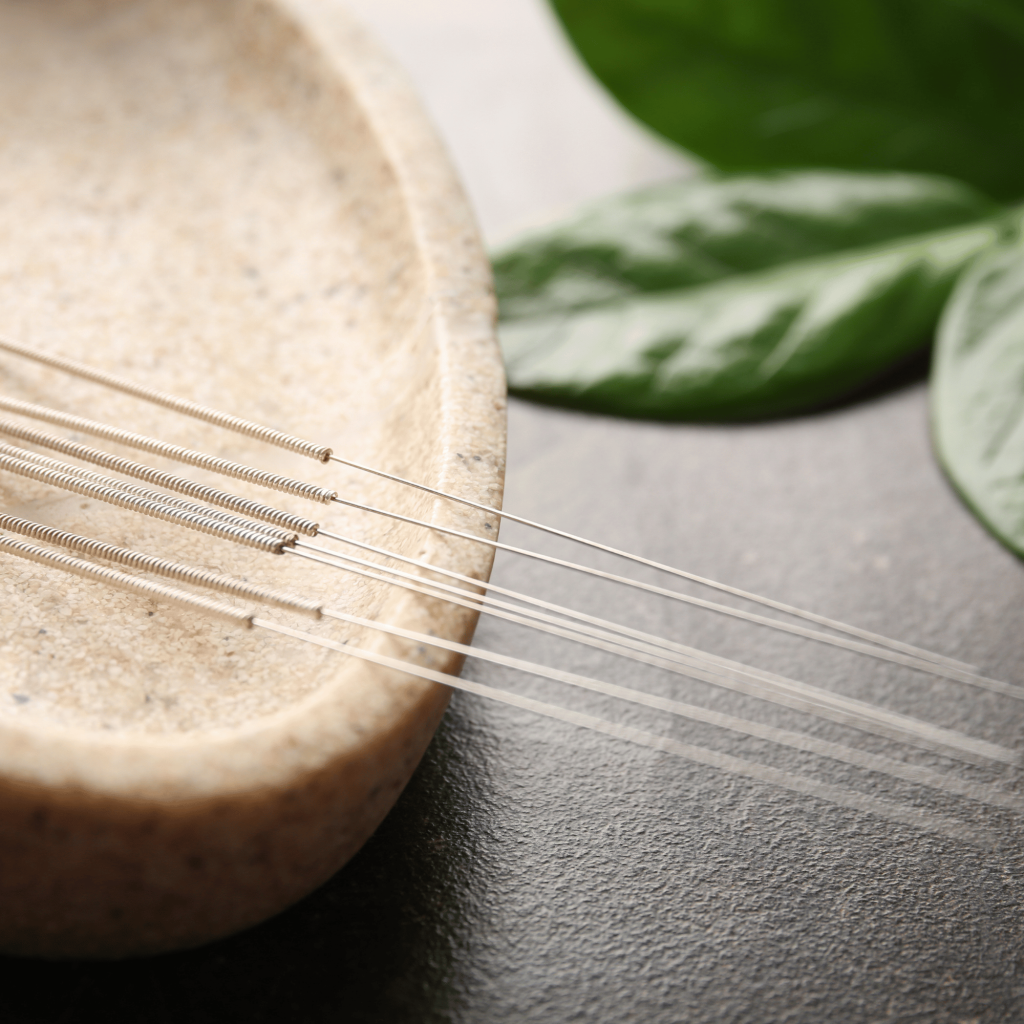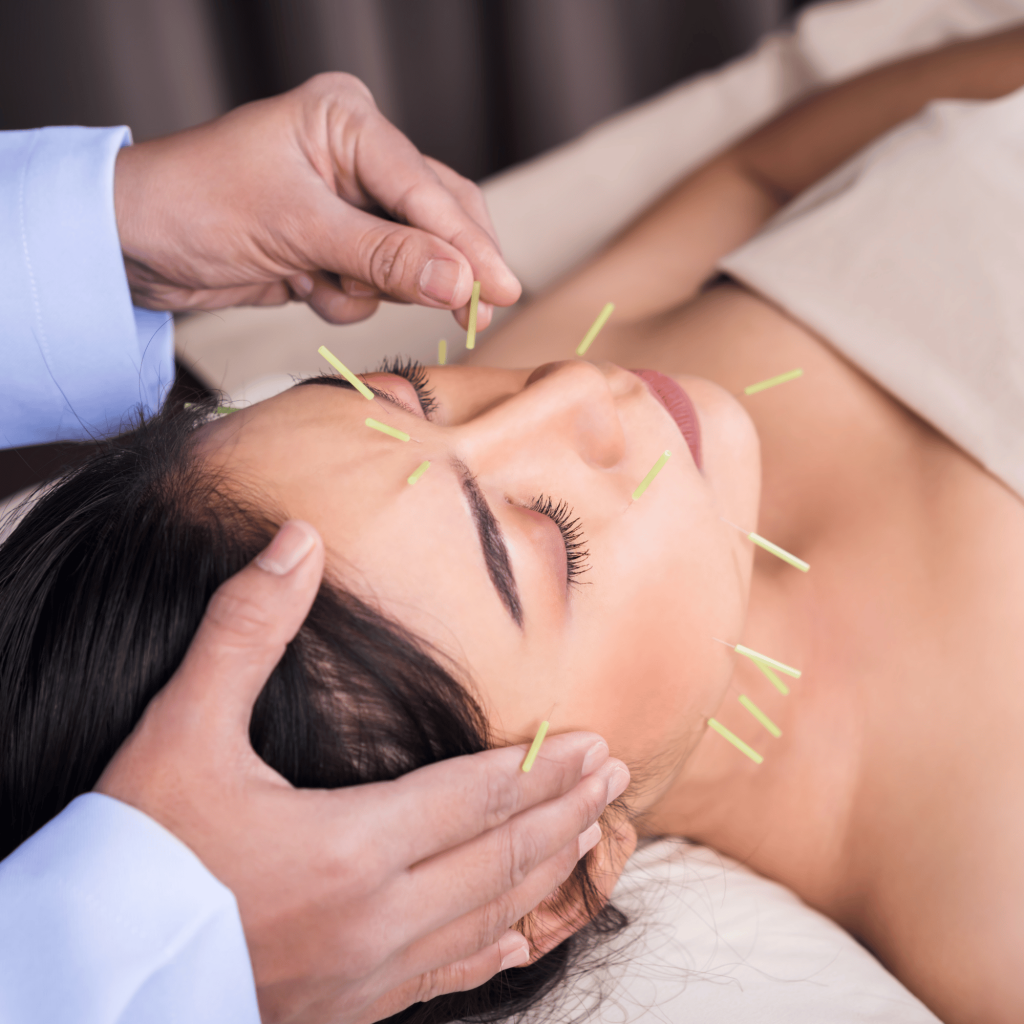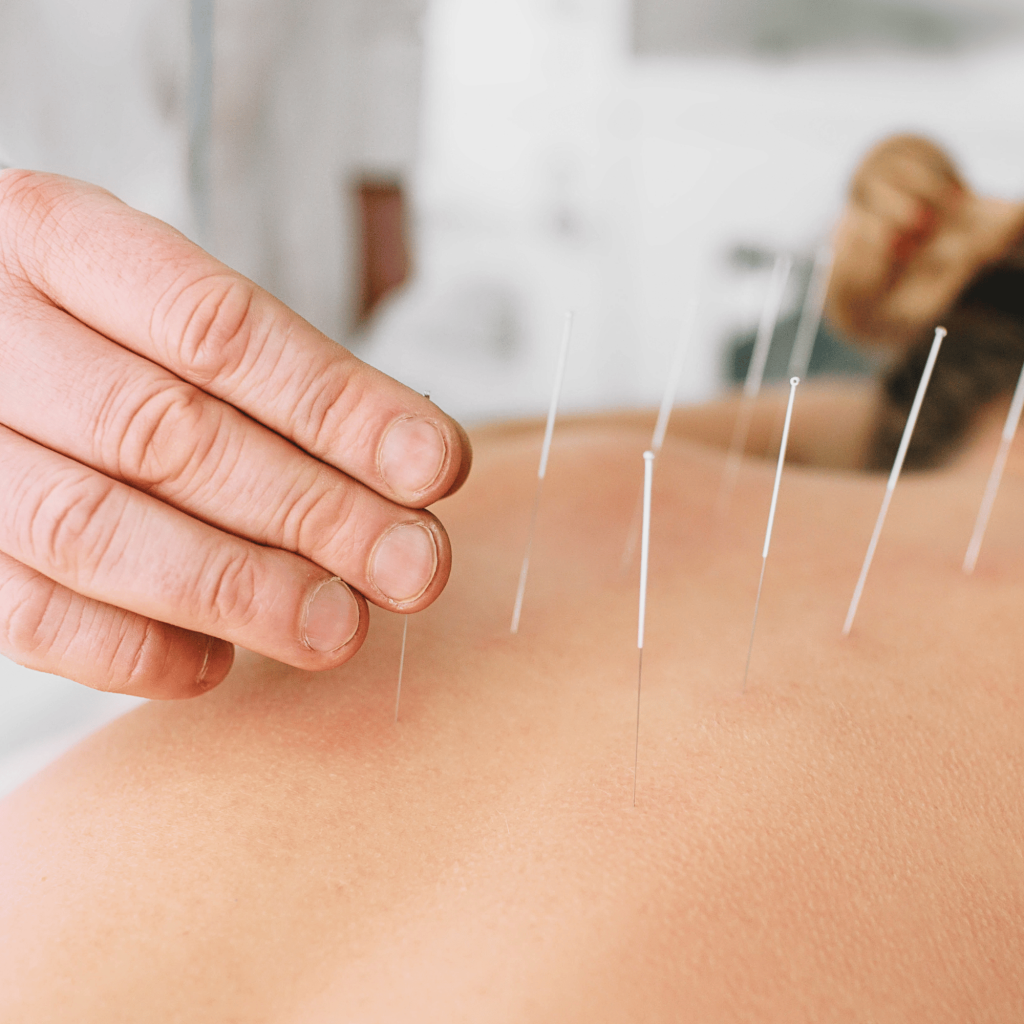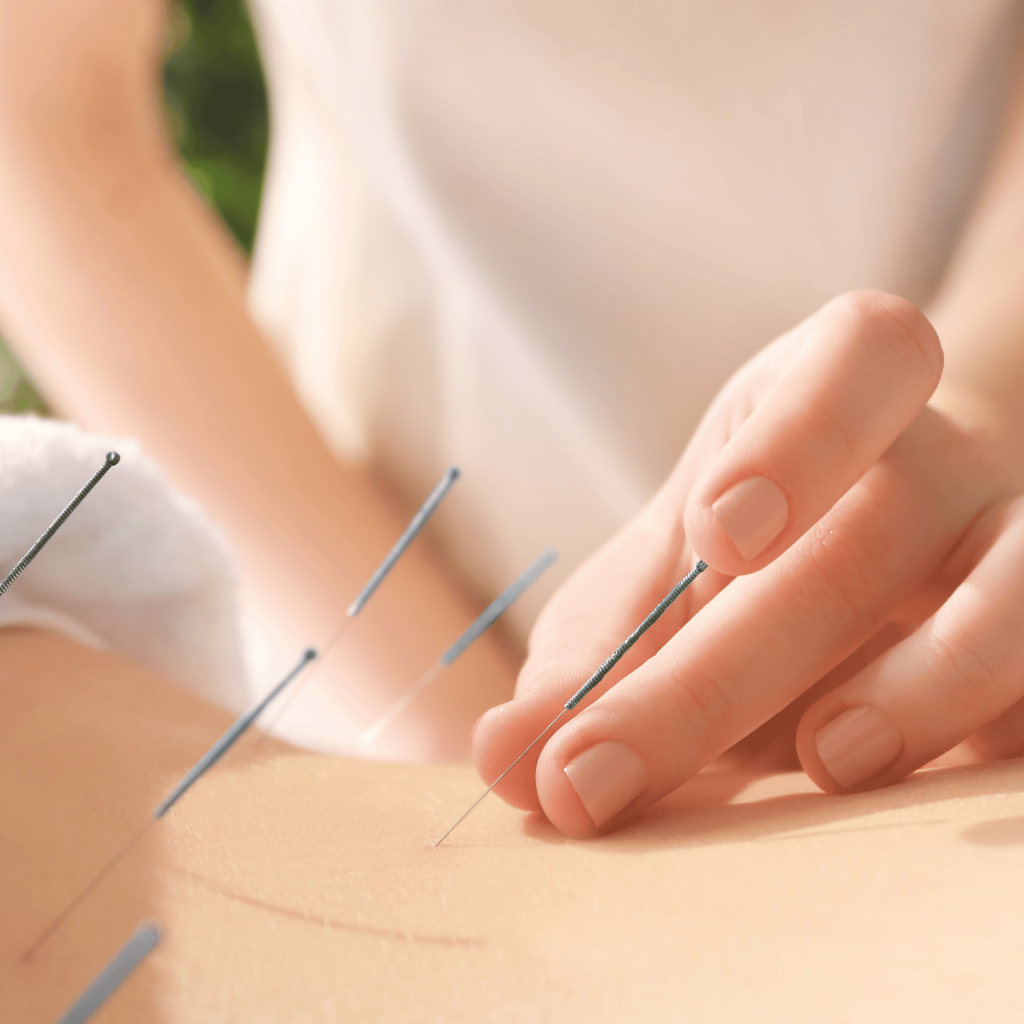Fairbanks Acupuncture
Acupuncture is a complex branch of ancient Chinese medicine.
Acupuncture – Frequently Asked Questions
How does acupuncture work?
Acupuncture is a medical system that has been developed in China over thousands of years. It is one of the fastest growing health care treatments because it works. In acupuncture, disposable hair-like stainless steel needles are inserted into specific points on the body. According to Chinese Medicine, these points are grouped together along channels called meridians. Illness and pain are due to blockages and imbalances of these meridians. Inserting thin needles into the body at these precise points can unblock the meridians and assist the flow thereby promoting health.
The Western clarification indicates that as these points are needled, the central and autonomic nervous systems as well as biochemical responses are prompted to promote body healing.
Studies in the early 1980s found that acupuncture works in part by stimulating the release of endorphins, the body’s natural feel-good chemicals, much like vigorous exercise does. Now, a growing body of research suggests that it may have several mechanisms of action. Those include stimulating blood flow and tissue repair at the needle sites and sending nerve signals to the brain that regulate the perception of pain and reboot the autonomic nervous system, which governs unconscious functions such as heart beat, respiration and digestion.
As I have seen over 25 years as a practitioner, acupuncture does have real effects on the human body, which scientists are now able to measure using high-tech tools. Neuroimaging studies show that acupuncture seems to calm areas of the brain that register pain and activate those involved in rest and recuperation. Doppler ultrasound shows that acupuncture increases blood flow in treated areas. Thermal imaging shows that it can make inflammation subside.
Acupuncture improves and stimulates the body’s immunity by increasing the number of white blood cells, anti-bodies and gamma globulin in the blood, which fight any infections.



 Hailey Gundersen2024-11-15I have been seeing Dr. Berg since the middle of my second trimester and it has helped subside all lower back pain throughout my pregnancy. I’m now at 35 weeks and feeling great! Could not recommend his care more.
Hailey Gundersen2024-11-15I have been seeing Dr. Berg since the middle of my second trimester and it has helped subside all lower back pain throughout my pregnancy. I’m now at 35 weeks and feeling great! Could not recommend his care more. Angela Holland2024-07-12Great chiropractors. Amazing massage therapists.
Angela Holland2024-07-12Great chiropractors. Amazing massage therapists. Caitlin Schnaidt2024-06-07I can't speak highly enough about Dr. Berg and the entire teqm at Spaulding. I am pregnant and have been suffering from bad sciatica which made doing most basic things throughout the day extremely challenging. After starting to see Dr. Berg I am finally able to get through the day without being in a constant state of pain. He also sees my special needs toddler and we have seen great improvements in his physical movements and comfort level since beginning to see Dr. Berg. He is knowledgeable, professional, friendly, warm, and overall an amazing chiropractor. Everyone in the office is friendly, warm, and welcoming. I was very hesitant about starting to see a chiropractor while pregnant and have been nothing but pleasantly surprised and satisfied with the results of both my own, and my son's, experiences. If you're looking for a chiropractors office I highly recommend Dr. Berg and Spaulding chiropractic.
Caitlin Schnaidt2024-06-07I can't speak highly enough about Dr. Berg and the entire teqm at Spaulding. I am pregnant and have been suffering from bad sciatica which made doing most basic things throughout the day extremely challenging. After starting to see Dr. Berg I am finally able to get through the day without being in a constant state of pain. He also sees my special needs toddler and we have seen great improvements in his physical movements and comfort level since beginning to see Dr. Berg. He is knowledgeable, professional, friendly, warm, and overall an amazing chiropractor. Everyone in the office is friendly, warm, and welcoming. I was very hesitant about starting to see a chiropractor while pregnant and have been nothing but pleasantly surprised and satisfied with the results of both my own, and my son's, experiences. If you're looking for a chiropractors office I highly recommend Dr. Berg and Spaulding chiropractic. Payton Baker2024-05-30Dr. Berg is hands down the best! Helped me through ALL my pregnancy pains and worked me in his schedule when I needed an adjustment ASAP! 100% recommend for anyone!
Payton Baker2024-05-30Dr. Berg is hands down the best! Helped me through ALL my pregnancy pains and worked me in his schedule when I needed an adjustment ASAP! 100% recommend for anyone! Josh Handeland2024-05-28Love theses people they are the best in town
Josh Handeland2024-05-28Love theses people they are the best in town Maggie Matheson2024-05-24Everyone is so sweet and helpful. I’ve had emergent pain and they got me right in and they are so helpful.
Maggie Matheson2024-05-24Everyone is so sweet and helpful. I’ve had emergent pain and they got me right in and they are so helpful. Tracey Ferguson2024-05-24Great staff
Tracey Ferguson2024-05-24Great staff Meghan Hoffman2024-05-20I've been seeing Dr. Wyatt Berg throughout my entire eight months of pregnancy so far, and I can't recommend him enough! He is incredibly understanding and knowledgeable about the specific needs of pregnant women. He always takes the time to listen to my concerns and adjusts my treatments accordingly. His adjustments have helped to alleviate my lower back pain and improve my sleep. Most recently, my baby went from being in the breech position to head down after a couple of adjustments. Thanks to Dr. Berg's care, I’ve felt much more comfortable and mobile throughout my pregnancy. I highly recommend him to any pregnant women or any individual who is looking for a natural and effective way to manage aches and pains. Alisha Greenberg (Massage Therapist) and Teresa Grotkopp (Acupuncturist) I would also highly recommend. The cherry on top is that the office staff at Spaulding Chiropractic is always friendly and helpful.
Meghan Hoffman2024-05-20I've been seeing Dr. Wyatt Berg throughout my entire eight months of pregnancy so far, and I can't recommend him enough! He is incredibly understanding and knowledgeable about the specific needs of pregnant women. He always takes the time to listen to my concerns and adjusts my treatments accordingly. His adjustments have helped to alleviate my lower back pain and improve my sleep. Most recently, my baby went from being in the breech position to head down after a couple of adjustments. Thanks to Dr. Berg's care, I’ve felt much more comfortable and mobile throughout my pregnancy. I highly recommend him to any pregnant women or any individual who is looking for a natural and effective way to manage aches and pains. Alisha Greenberg (Massage Therapist) and Teresa Grotkopp (Acupuncturist) I would also highly recommend. The cherry on top is that the office staff at Spaulding Chiropractic is always friendly and helpful. Nigel Morton2024-05-20Dr. Berg truly cares about his craft and his patients. His care shows in the form results from appointment to appointment.
Nigel Morton2024-05-20Dr. Berg truly cares about his craft and his patients. His care shows in the form results from appointment to appointment. Cody Whiteley2024-05-09I took my 6 week old baby to see DR. Berg for hard to pass gas, excessive fussiness and instantly he was able to ease my baby. Over just a couple visits we noticed a huge difference and baby was much happier. We took him back again at 4 months because he was constipated - google told us it was normal to have inconsistent bowel movements around his age but it made him extremely fussy and uncomfortable. Within a couple hours after seeing DR Berg our baby began making regular bowel movements again and his mood improved drastically. My wife also saw Dr Berg after giving birth and having multiple complaints of pain and unusual sensations. He helped realign her pelvis, hips and relieve upper back/neck pain associated with breastfeeding/ holding baby. Dr Berg is incredibly knowledgeable, holistic and personable. He has a baby of his own so he is very gentle and intuitive. We cant recommend his expertise enough, he truly takes the time to listen, notice, and fix the problem or recommend resources or other specialists. To say the least, Chiropractic care with Dr Berg has been a game changer for both baby and momma. Fairbanks is truly lucky to have this high quality care.
Cody Whiteley2024-05-09I took my 6 week old baby to see DR. Berg for hard to pass gas, excessive fussiness and instantly he was able to ease my baby. Over just a couple visits we noticed a huge difference and baby was much happier. We took him back again at 4 months because he was constipated - google told us it was normal to have inconsistent bowel movements around his age but it made him extremely fussy and uncomfortable. Within a couple hours after seeing DR Berg our baby began making regular bowel movements again and his mood improved drastically. My wife also saw Dr Berg after giving birth and having multiple complaints of pain and unusual sensations. He helped realign her pelvis, hips and relieve upper back/neck pain associated with breastfeeding/ holding baby. Dr Berg is incredibly knowledgeable, holistic and personable. He has a baby of his own so he is very gentle and intuitive. We cant recommend his expertise enough, he truly takes the time to listen, notice, and fix the problem or recommend resources or other specialists. To say the least, Chiropractic care with Dr Berg has been a game changer for both baby and momma. Fairbanks is truly lucky to have this high quality care.
How many treatments are necessary?
The number of treatments depends upon the nature of your complaint. Although you may only need up to three sessions to experience relief, a series of treatments is generally recommended. It is often easier to determine your course of treatment after experiencing the results of your first session.
Acupuncture can also be preventative medicine. You don’t have to have a medical ailment to receive treatment. Acupuncture can promote relaxation and stimulate your immune system to keep you healthy.
What happens during a treatment?
After your condition is discussed, you will be examined to determine which points to use. Acupuncture needles are sterile, pre-packaged, disposable, and hair-thin. After the needles are inserted, they stay in place for 20 to 30 minutes. During this time, moxabustion, which warms the needle and is extremely soothing, may be administered. The effects of acupuncture are so relaxing that due to the endorphins which are released, many people fall asleep during treatment!
Does it hurt?
Some people experience no sensation at all, while some may feel what is similar to a mosquito bite.
Does my insurance cover acupuncture?
More than likely – we can gladly assist you with verification!
If you need a Fairbanks acupuncture clinic or Fairbanks chiropractor call us for an appointment.
 Hailey Gundersen2024-11-15I have been seeing Dr. Berg since the middle of my second trimester and it has helped subside all lower back pain throughout my pregnancy. I’m now at 35 weeks and feeling great! Could not recommend his care more.
Hailey Gundersen2024-11-15I have been seeing Dr. Berg since the middle of my second trimester and it has helped subside all lower back pain throughout my pregnancy. I’m now at 35 weeks and feeling great! Could not recommend his care more. Angela Holland2024-07-12Great chiropractors. Amazing massage therapists.
Angela Holland2024-07-12Great chiropractors. Amazing massage therapists. Caitlin Schnaidt2024-06-07I can't speak highly enough about Dr. Berg and the entire teqm at Spaulding. I am pregnant and have been suffering from bad sciatica which made doing most basic things throughout the day extremely challenging. After starting to see Dr. Berg I am finally able to get through the day without being in a constant state of pain. He also sees my special needs toddler and we have seen great improvements in his physical movements and comfort level since beginning to see Dr. Berg. He is knowledgeable, professional, friendly, warm, and overall an amazing chiropractor. Everyone in the office is friendly, warm, and welcoming. I was very hesitant about starting to see a chiropractor while pregnant and have been nothing but pleasantly surprised and satisfied with the results of both my own, and my son's, experiences. If you're looking for a chiropractors office I highly recommend Dr. Berg and Spaulding chiropractic.
Caitlin Schnaidt2024-06-07I can't speak highly enough about Dr. Berg and the entire teqm at Spaulding. I am pregnant and have been suffering from bad sciatica which made doing most basic things throughout the day extremely challenging. After starting to see Dr. Berg I am finally able to get through the day without being in a constant state of pain. He also sees my special needs toddler and we have seen great improvements in his physical movements and comfort level since beginning to see Dr. Berg. He is knowledgeable, professional, friendly, warm, and overall an amazing chiropractor. Everyone in the office is friendly, warm, and welcoming. I was very hesitant about starting to see a chiropractor while pregnant and have been nothing but pleasantly surprised and satisfied with the results of both my own, and my son's, experiences. If you're looking for a chiropractors office I highly recommend Dr. Berg and Spaulding chiropractic. Payton Baker2024-05-30Dr. Berg is hands down the best! Helped me through ALL my pregnancy pains and worked me in his schedule when I needed an adjustment ASAP! 100% recommend for anyone!
Payton Baker2024-05-30Dr. Berg is hands down the best! Helped me through ALL my pregnancy pains and worked me in his schedule when I needed an adjustment ASAP! 100% recommend for anyone! Josh Handeland2024-05-28Love theses people they are the best in town
Josh Handeland2024-05-28Love theses people they are the best in town Maggie Matheson2024-05-24Everyone is so sweet and helpful. I’ve had emergent pain and they got me right in and they are so helpful.
Maggie Matheson2024-05-24Everyone is so sweet and helpful. I’ve had emergent pain and they got me right in and they are so helpful. Tracey Ferguson2024-05-24Great staff
Tracey Ferguson2024-05-24Great staff Meghan Hoffman2024-05-20I've been seeing Dr. Wyatt Berg throughout my entire eight months of pregnancy so far, and I can't recommend him enough! He is incredibly understanding and knowledgeable about the specific needs of pregnant women. He always takes the time to listen to my concerns and adjusts my treatments accordingly. His adjustments have helped to alleviate my lower back pain and improve my sleep. Most recently, my baby went from being in the breech position to head down after a couple of adjustments. Thanks to Dr. Berg's care, I’ve felt much more comfortable and mobile throughout my pregnancy. I highly recommend him to any pregnant women or any individual who is looking for a natural and effective way to manage aches and pains. Alisha Greenberg (Massage Therapist) and Teresa Grotkopp (Acupuncturist) I would also highly recommend. The cherry on top is that the office staff at Spaulding Chiropractic is always friendly and helpful.
Meghan Hoffman2024-05-20I've been seeing Dr. Wyatt Berg throughout my entire eight months of pregnancy so far, and I can't recommend him enough! He is incredibly understanding and knowledgeable about the specific needs of pregnant women. He always takes the time to listen to my concerns and adjusts my treatments accordingly. His adjustments have helped to alleviate my lower back pain and improve my sleep. Most recently, my baby went from being in the breech position to head down after a couple of adjustments. Thanks to Dr. Berg's care, I’ve felt much more comfortable and mobile throughout my pregnancy. I highly recommend him to any pregnant women or any individual who is looking for a natural and effective way to manage aches and pains. Alisha Greenberg (Massage Therapist) and Teresa Grotkopp (Acupuncturist) I would also highly recommend. The cherry on top is that the office staff at Spaulding Chiropractic is always friendly and helpful. Nigel Morton2024-05-20Dr. Berg truly cares about his craft and his patients. His care shows in the form results from appointment to appointment.
Nigel Morton2024-05-20Dr. Berg truly cares about his craft and his patients. His care shows in the form results from appointment to appointment. Cody Whiteley2024-05-09I took my 6 week old baby to see DR. Berg for hard to pass gas, excessive fussiness and instantly he was able to ease my baby. Over just a couple visits we noticed a huge difference and baby was much happier. We took him back again at 4 months because he was constipated - google told us it was normal to have inconsistent bowel movements around his age but it made him extremely fussy and uncomfortable. Within a couple hours after seeing DR Berg our baby began making regular bowel movements again and his mood improved drastically. My wife also saw Dr Berg after giving birth and having multiple complaints of pain and unusual sensations. He helped realign her pelvis, hips and relieve upper back/neck pain associated with breastfeeding/ holding baby. Dr Berg is incredibly knowledgeable, holistic and personable. He has a baby of his own so he is very gentle and intuitive. We cant recommend his expertise enough, he truly takes the time to listen, notice, and fix the problem or recommend resources or other specialists. To say the least, Chiropractic care with Dr Berg has been a game changer for both baby and momma. Fairbanks is truly lucky to have this high quality care.
Cody Whiteley2024-05-09I took my 6 week old baby to see DR. Berg for hard to pass gas, excessive fussiness and instantly he was able to ease my baby. Over just a couple visits we noticed a huge difference and baby was much happier. We took him back again at 4 months because he was constipated - google told us it was normal to have inconsistent bowel movements around his age but it made him extremely fussy and uncomfortable. Within a couple hours after seeing DR Berg our baby began making regular bowel movements again and his mood improved drastically. My wife also saw Dr Berg after giving birth and having multiple complaints of pain and unusual sensations. He helped realign her pelvis, hips and relieve upper back/neck pain associated with breastfeeding/ holding baby. Dr Berg is incredibly knowledgeable, holistic and personable. He has a baby of his own so he is very gentle and intuitive. We cant recommend his expertise enough, he truly takes the time to listen, notice, and fix the problem or recommend resources or other specialists. To say the least, Chiropractic care with Dr Berg has been a game changer for both baby and momma. Fairbanks is truly lucky to have this high quality care.


